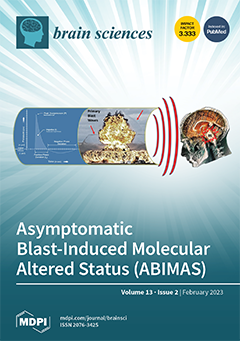Purpose: Brain tumors are diagnosed and classified manually and noninvasively by radiologists using Magnetic Resonance Imaging (MRI) data. The risk of misdiagnosis may exist due to human factors such as lack of time, fatigue, and relatively low experience. Deep learning methods have become increasingly important in MRI classification. To improve diagnostic accuracy, researchers emphasize the need to develop Computer-Aided Diagnosis (CAD) computational diagnostics based on artificial intelligence (AI) systems by using deep learning methods such as convolutional neural networks (CNN) and improving the performance of CNN by combining it with other data analysis tools such as wavelet transform. In this study, a novel diagnostic framework based on CNN and DWT data analysis is developed for the diagnosis of glioma tumors in the brain, among other tumors and other diseases, with T2-SWI MRI scans. It is a binary CNN classifier that treats the disease “glioma tumor” as positive and the other pathologies as negative, resulting in a very unbalanced binary problem. The study includes a comparative analysis of a CNN trained with wavelet transform data of MRIs instead of their pixel intensity values in order to demonstrate the increased performance of the CNN and DWT analysis in diagnosing brain gliomas. The results of the proposed CNN architecture are also compared with a deep CNN pre-trained on VGG16 transfer learning network and with the SVM machine learning method using DWT knowledge. Methods: To improve the accuracy of the CNN classifier, the proposed CNN model uses as knowledge the spatial and temporal features extracted by converting the original MRI images to the frequency domain by performing Discrete Wavelet Transformation (DWT), instead of the traditionally used original scans in the form of pixel intensities. Moreover, no pre-processing was applied to the original images. The images used are MRIs of type T2-SWI sequences parallel to the axial plane. Firstly, a compression step is applied for each MRI scan applying DWT up to three levels of decomposition. These data are used to train a 2D CNN in order to classify the scans as showing glioma or not. The proposed CNN model is trained on MRI slices originated from 382 various male and female adult patients, showing healthy and pathological images from a selection of diseases (showing glioma, meningioma, pituitary, necrosis, edema, non-enchasing tumor, hemorrhagic foci, edema, ischemic changes, cystic areas, etc.). The images are provided by the database of the Medical Image Computing and Computer-Assisted Intervention (MICCAI) and the Ischemic Stroke Lesion Segmentation (ISLES) challenges on Brain Tumor Segmentation (BraTS) challenges 2016 and 2017, as well as by the numerous records kept in the public general hospital of Chania, Crete, “Saint George”. Results: The proposed frameworks are experimentally evaluated by examining MRI slices originating from 190 different patients (not included in the training set), of which 56% are showing gliomas by the longest two axes less than 2 cm and 44% are showing other pathological effects or healthy cases. Results show convincing performance when using as information the spatial and temporal features extracted by the original scans. With the proposed CNN model and with data in DWT format, we achieved the following statistic percentages: accuracy 0.97, sensitivity (recall) 1, specificity 0.93, precision 0.95, FNR 0, and FPR 0.07. These numbers are higher for this data format (respectively: accuracy by 6% higher, recall by 11%, specificity by 7%, precision by 5%, FNR by 0.1%, and FPR is the same) than it would be, had we used as input data the intensity values of the MRIs (instead of the DWT analysis of the MRIs). Additionally, our study showed that when our CNN takes into account the TL of the existing network VGG, the performance values are lower, as follows: accuracy 0.87, sensitivity (recall) 0.91, specificity 0.84, precision 0.86, FNR of 0.08, and FPR 0.14. Conclusions: The experimental results show the outperformance of the CNN, which is not based on transfer learning, but is using as information the MRI brain scans decomposed into DWT information instead of the pixel intensity of the original scans. The results are promising for the proposed CNN based on DWT knowledge to serve for binary diagnosis of glioma tumors among other tumors and diseases. Moreover, the SVM learning model using DWT data analysis performs with higher accuracy and sensitivity than using pixel values.
Full article






